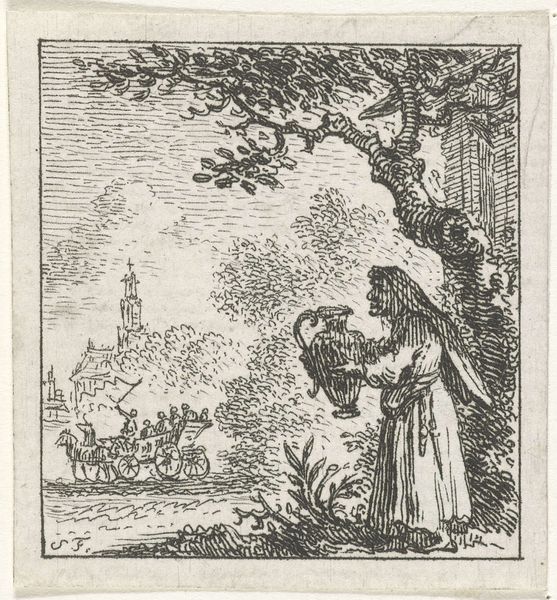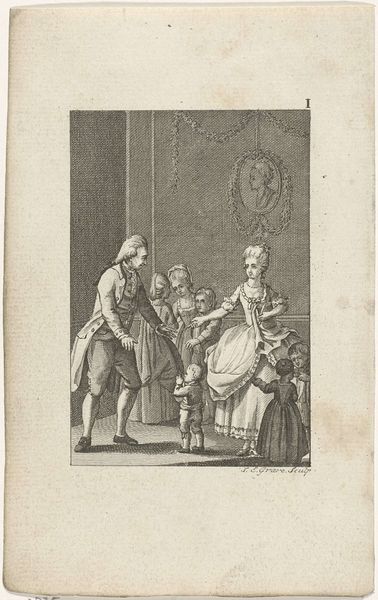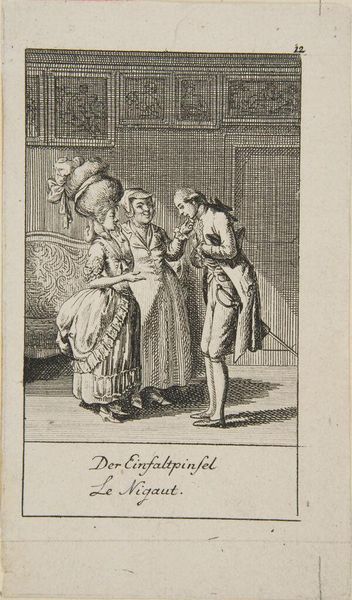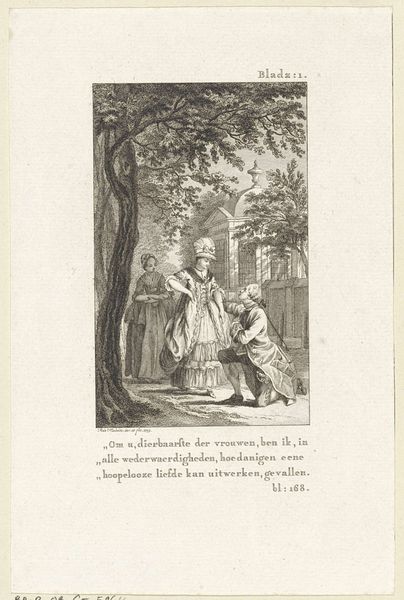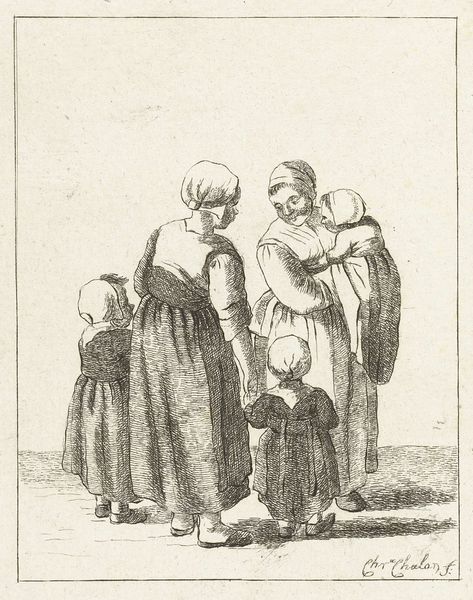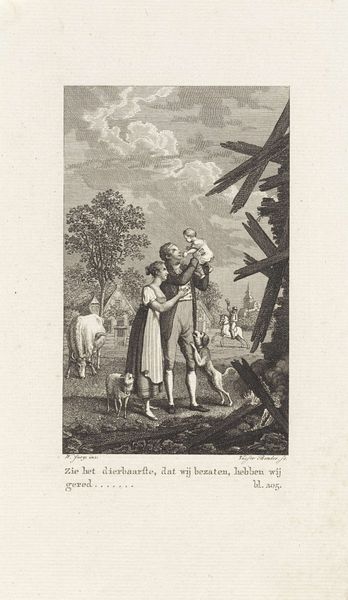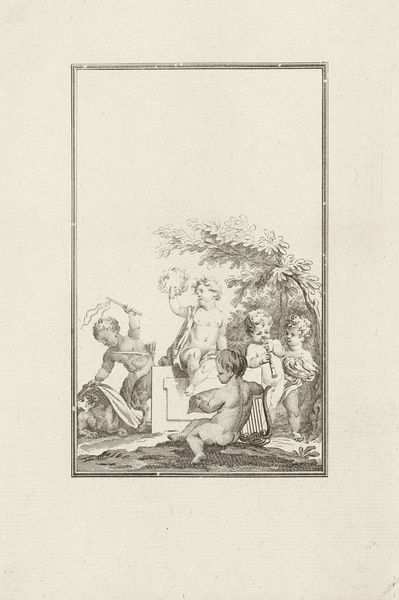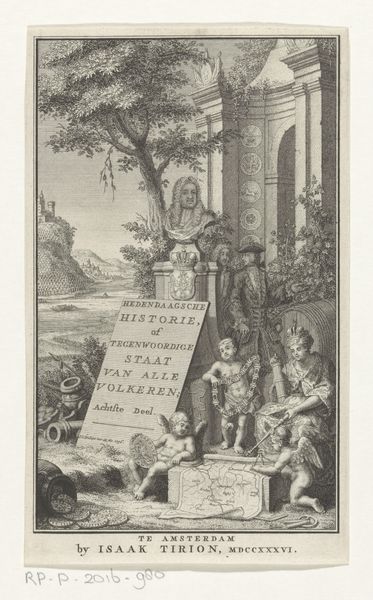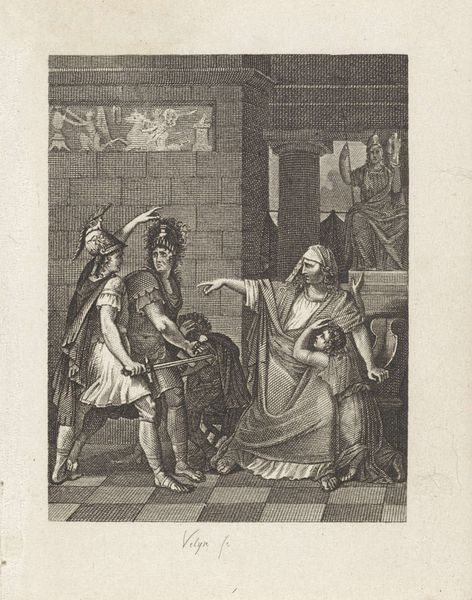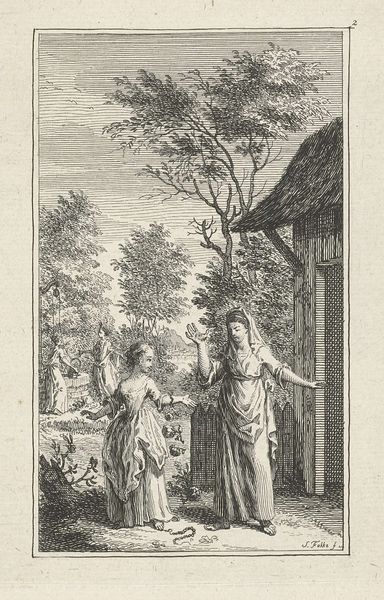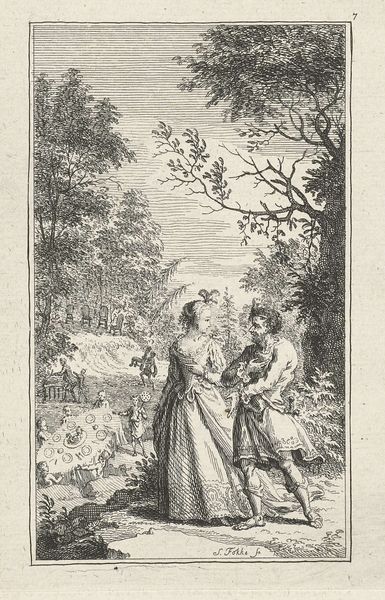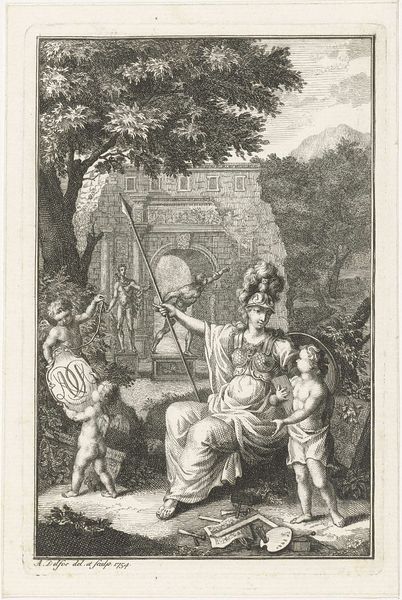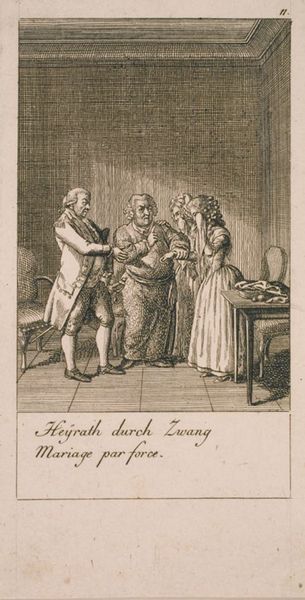
Drie generaties vrouwen bij een buste van de gepersonifieerde bescheidenheid 1820
0:00
0:00
Dimensions: height 106 mm, width 58 mm
Copyright: Rijks Museum: Open Domain
Editor: This is "Three Generations of Women at a Bust of Personified Modesty," an engraving by Philippus Velijn, made in 1820. I’m immediately struck by the composition. The figures are posed so serenely, yet the scene feels overtly didactic. What's your take on it? Curator: I see a powerful statement about prescribed roles for women in the early 19th century. It's not just about serenity, it’s about the social expectations loaded onto women across generations. How does the inclusion of the "modesty" bust factor into that for you? Editor: It seems to me it's explicitly stating what's valued in women at the time. But who gets to decide what modesty looks like? Curator: Exactly! This work reveals the constraints imposed on women within the 'civilized' sphere. Modesty, then, wasn’t just a virtue; it was a tool for maintaining social order, a means of control. Notice the beehive – a symbol of industry and domesticity, right next to the women. How might we read that? Editor: It feels like women's worth is directly linked to their roles as homemakers and caretakers. This image isn’t just a depiction, but a prescription. Curator: Precisely. And the "reading material for women" at the top solidifies this. What kind of narratives were being pushed onto women, and by whom? Considering the political climate of the time – the rise of industrialization, shifts in social structures – who benefitted from women staying within narrowly defined domestic roles? Editor: I hadn’t thought about the broader context. This makes me wonder about resistance. Were women of this era questioning these ideals? Curator: Absolutely. This image becomes even richer when viewed alongside the burgeoning feminist movements of the time. It serves as a reminder that representations rarely reflect the whole story, and critical analysis is key to unveiling those complexities. Editor: This conversation has transformed how I see this piece. It's more than just an image of domestic tranquility; it's a battleground of ideas.
Comments
No comments
Be the first to comment and join the conversation on the ultimate creative platform.
